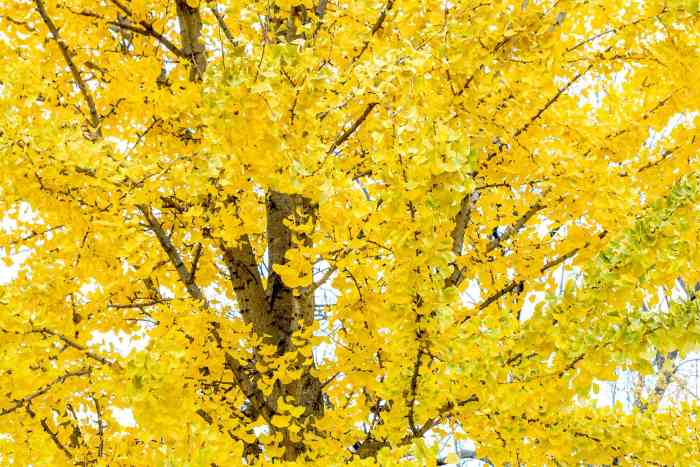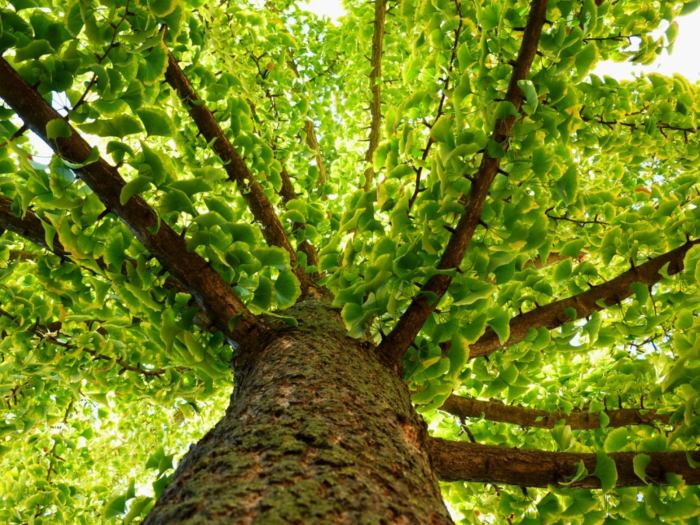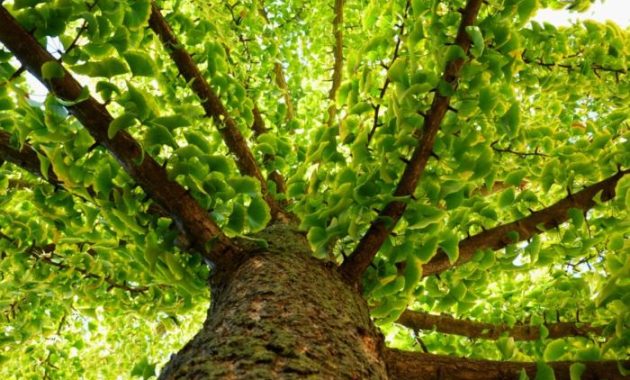Ideal Planting Time Based on Climate: When To Plant Ginkgo Tree
When to plant ginkgo tree – Selecting the optimal planting time for a Ginkgo biloba tree is crucial for its establishment and long-term health. The success of planting hinges on avoiding both extreme cold and heat, ensuring the tree has sufficient time to develop a robust root system before winter dormancy. Several factors, including climate and microclimate variations, significantly influence the ideal planting window.Optimal planting times vary considerably depending on the USDA Plant Hardiness Zone.
Generally, it is recommended to plant Ginkgo trees during the dormant season, avoiding periods of active growth or extreme temperatures. However, specific timing within this period can significantly impact the tree’s chances of survival and thriving.
Optimal Planting Times by USDA Hardiness Zone
The following table Artikels suggested planting months for Ginkgo biloba across various USDA hardiness zones. These recommendations are based on average climatic conditions and should be adjusted based on local weather patterns and microclimate considerations.
The best time to plant a ginkgo tree is during spring or fall, after the threat of frost has passed. Getting the timing right is half the battle, but you also need to make sure it gets the right nutrients to thrive. For fruit trees, that means using a good quality fertilizer, like the ones you can find at plant food for fruit trees , but ginkgoes are pretty low-maintenance once established.
So, spring or fall planting, and you’re golden!
| Zone | Ideal Planting Month(s) | Reasoning | Considerations |
|---|---|---|---|
| 4-6 | April-May or September-October | Avoid late spring frosts and ensure sufficient time for root establishment before winter. | Monitor soil temperature; ensure it’s consistently above 50°F (10°C). |
| 7-8 | October-November or March-April | Avoid extreme summer heat and potential for drought stress. | Ensure consistent soil moisture throughout the establishment period. |
| 9-10 | November-December or February-March | Mild winters allow for planting in late fall or early spring. | Protect young saplings from potential frost damage. |
Impact of Microclimates on Planting Times
Microclimates, localized variations in climate conditions, can significantly alter the ideal planting time within a given USDA hardiness zone. Factors such as elevation, proximity to water bodies, soil drainage, and wind exposure can create microclimates that differ substantially from the overall zone’s average climate. For instance, a north-facing slope in zone 7 might experience cooler temperatures and later spring thaws than a south-facing slope, necessitating a later planting date.
Conversely, a sheltered location might experience milder conditions, allowing for earlier planting. Careful observation of local weather patterns and soil conditions is crucial for determining the optimal planting time in specific microclimates. Detailed weather records for the specific location should be consulted, alongside soil temperature monitoring, to ensure optimal planting conditions.
Decision-Making Flowchart for Determining Optimal Planting Time
The following flowchart Artikels a systematic approach to determine the best planting time based on local weather patterns:[Flowchart Description: The flowchart would begin with a start node. The first decision point would be: “Is the local USDA Hardiness Zone known?”. A “yes” branch would lead to a table lookup (referencing the table above) to determine the suggested planting months.
A “no” branch would lead to a step to determine the hardiness zone using a reliable resource (e.g., USDA Plant Hardiness Zone Map). From the suggested planting months, the next decision point would be: “Are local weather forecasts available?”. A “yes” branch would lead to a check for frost risk and consistently warm soil temperatures. If frost risk is high or soil temperatures are too low, the planting is delayed.
If conditions are favorable, planting proceeds. A “no” branch would lead to a recommendation to monitor local weather conditions closely before planting. The flowchart would end with an “optimal planting time determined” node.]
Post-Planting Care

Successful establishment of a Ginkgo tree relies heavily on diligent post-planting care during its first year. This crucial period dictates the young tree’s ability to thrive and develop a robust root system, ultimately influencing its long-term health and growth. Proper watering, mulching, and pest/disease management are essential components of this process.Watering Requirements for Newly Planted Ginkgo TreesNewly planted Ginkgo trees require consistent watering, especially during the first growing season.
Insufficient watering can severely stress the young tree, hindering root establishment and increasing vulnerability to pests and diseases. The frequency and amount of watering depend on several factors, including soil type, climate, and the size of the tree. Clay soils retain moisture longer than sandy soils, requiring less frequent watering. Hot, dry climates demand more frequent watering than cooler, more humid ones.
Generally, aim to keep the soil consistently moist, but not waterlogged, in the root zone. Deep, infrequent watering is preferable to shallow, frequent watering, encouraging deep root growth. A soaker hose or drip irrigation system can provide efficient and consistent moisture delivery. During extended periods of drought, increase watering frequency and volume as needed. Regularly check the soil moisture by inserting your finger a few inches into the soil; if the soil feels dry, it’s time to water.
Mulching Techniques for Young Ginkgo Trees
Applying a layer of mulch around the base of a newly planted Ginkgo tree offers several benefits. Mulch helps retain soil moisture, reducing the frequency of watering. It also moderates soil temperature, protecting roots from extreme heat and cold. Furthermore, mulch suppresses weed growth, reducing competition for nutrients and water. Choose a mulch that is organic and decomposes slowly, such as shredded bark or wood chips.
Avoid using mulch that is too thick or contains weed seeds. A layer of 2-3 inches is generally sufficient. Ensure the mulch is spread evenly around the tree, keeping it a few inches away from the trunk to prevent rot. Reapply mulch as needed throughout the growing season to maintain a consistent layer.
Protecting Young Ginkgo Trees from Pests and Diseases
Young Ginkgo trees are relatively resistant to pests and diseases, but preventative measures are still recommended. Regular inspection of the tree for any signs of pests or diseases is crucial. Common pests include aphids and scale insects. These can be controlled by using insecticidal soap or horticultural oil. Diseases such as leaf spot can be managed by ensuring proper air circulation around the tree and avoiding overhead watering.
Proper watering and mulching practices contribute significantly to a tree’s overall health and resilience, making it less susceptible to pests and diseases. If a significant infestation or disease is observed, consulting a certified arborist is advisable for appropriate treatment and management strategies. Early detection and intervention are vital in preventing serious damage to the young tree.
Factors Affecting Growth

The successful cultivation of a Ginkgo biloba tree hinges on understanding and managing a variety of environmental and long-term maintenance factors. These elements significantly influence the tree’s growth rate, overall health, and lifespan. Ignoring these factors can lead to stunted growth, disease susceptibility, and reduced aesthetic appeal.Environmental factors play a crucial role in the development of a Ginkgo tree.
These range from readily apparent elements like wind exposure to less obvious factors such as air quality. Optimal conditions encourage robust growth, while unfavorable conditions can lead to stress and compromise the tree’s vitality.
Environmental Influences on Ginkgo Growth
Wind exposure can significantly affect the growth and form of a Ginkgo tree. Strong, persistent winds can cause physical damage, such as broken branches, and can stunt growth by increasing transpiration rates. Conversely, sheltered locations promote more vigorous growth and a more symmetrical tree shape. Urban environments, with their higher levels of air pollution, can also negatively impact Ginkgo trees.
Pollutants such as ozone and particulate matter can damage leaves, reduce photosynthetic efficiency, and weaken the tree’s overall health. Soil conditions are equally critical; well-drained, fertile soil rich in organic matter is essential for optimal root development and nutrient uptake. Conversely, poorly drained or compacted soils can restrict root growth, leading to stunted growth and increased susceptibility to disease.
Finally, sunlight is a critical factor; Ginkgoes generally thrive in full sun but can tolerate partial shade. Insufficient sunlight can lead to weaker growth and reduced leaf production.
Long-Term Maintenance of Mature Ginkgo Trees, When to plant ginkgo tree
Mature Ginkgo trees generally require minimal maintenance once established. However, regular pruning can be beneficial to maintain shape, remove dead or diseased branches, and prevent overcrowding. This is especially important in urban settings where the tree’s size and growth could impact infrastructure or pedestrian walkways. Fertilization is typically not necessary for established trees in fertile soil, but soil testing can determine if nutrient supplementation is needed.
Regular monitoring for pests and diseases is also crucial. Early detection and appropriate treatment can prevent serious problems. In the event of significant damage from storms or other events, professional arboricultural assistance may be required for repair and recovery.
Growth Rate Comparison: Male and Female Ginkgo Trees
While there is no significant difference in the overall growth rate between male and female Ginkgo trees during their early years, subtle variations may appear as they mature. Generally, both sexes exhibit a moderate growth rate, adding several feet in height and width annually during their prime growing years. However, some anecdotal evidence suggests that female trees might exhibit slightly slower growth rates in their later years due to the energy expenditure associated with seed production.
This difference is often subtle and not consistently observed across all individuals. This difference is not usually substantial enough to be a significant factor in selecting a male or female tree for planting.
Questions Often Asked
How long does it take for a ginkgo tree to mature?
Ginkgo trees are slow-growing. They can take several decades to reach their full mature size.
Can I plant a ginkgo tree in a pot?
While young ginkgos can be grown in pots, they eventually need to be planted in the ground to reach their full potential. Potted ginkgoes will require frequent repotting.
What are the common pests and diseases that affect ginkgo trees?
Ginkgoes are relatively pest and disease resistant, but they can be susceptible to certain fungal diseases and some insect infestations. Regular inspection is key.
Do ginkgo trees have invasive roots?
Ginkgo roots are not considered aggressively invasive, but they can be extensive, so avoid planting too close to buildings or other structures.

